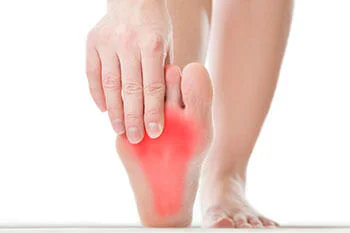Table of Contents
Introduction
A bunion, or hallux valgus, is a bony protrusion at the base of the big toe, developing from pressure causing the toe to lean towards the second toe. This misalignment, often resulting from the joint at the toe’s base bearing significant weight during activities such as standing and walking, can lead to symptoms like pain, stiffness, redness, and swelling. Additionally, calluses often form due to friction between the big and second toe or on the ball of the foot. Bunions tend to worsen over time if not addressed, possibly causing difficulty in wearing shoes and walking comfortably. While bunions are more common in adults, they can also be present from birth or develop during childhood. The condition can affect one or both feet, posing a persistent challenge to foot comfort and function. If you have an uncomfortable bunion, it is suggested that you schedule an appointment with a podiatrist to discuss treatment options that may increase your comfort.
If you are suffering from bunion pain, contact one of our podiatrists of Integrative Foot & Ankle Centers of Washington. Our doctors can provide the care you need to keep you pain-free and on your feet.
What Is a Bunion?
Causes
- Genetics – some people inherit feet that are more prone to bunion development
- Inflammatory Conditions – rheumatoid arthritis and polio may cause bunion development
Symptoms
- Redness and inflammation
- Pain and tenderness
- Callus or corns on the bump
- Restricted motion in the big toe
Diagnosis
In order to diagnose your bunion, your podiatrist may ask about your medical history, symptoms, and general health. Your doctor might also order an x-ray to take a closer look at your feet. Nonsurgical treatment options include orthotics, padding, icing, changes in footwear, and medication. If nonsurgical treatments don’t alleviate your bunion pain, surgery may be necessary.


